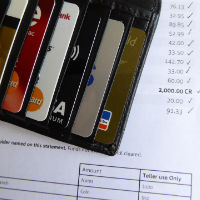Managing Treasury Risk – Foreign Exchange Risk (Part III)
| 7-2-2017 | Lionel Pavey |

There are lots of discussions concerning risk, but let us start by trying to define what we mean by risk. In my third article I will focus on foreign exchange risk. This risk has to be taken into consideration when a financial commitment is denominated in a currency other than the base currency of a company.
There are 4 types of foreign exchange risk.
Transaction Risk
Transaction risk occurs when future cash flows are denominated in other currencies. This refers to both payables and receivables. Adverse changes in foreign exchange prices can lead to a fall in profit, or even a loss.
Translation Risk
Translation risk occurs when accounting translation for asset and liabilities in financial statements are reported. When consolidating from an operating currency into a reporting currency (overseas offices etc.) the value of assets, liabilities and profits are translated back to the reporting currency. Translation risk does not affect a company’s cash flows, but adverse changes can affect a company’s earnings and value.
Economic Risk
Economic risk occurs when changes in foreign exchange rates can leave a company at a disadvantage in comparison to competitors. This can affect competitive advantage and market share. Future cash flows from investments are also exposed to economic risk.
Contingent Risk
Contingent risk occurs when potential future work is expressed in a foreign currency. An example would be taking part in a tender for work in another country where the pricing is also in a foreign currency. If a company won a large foreign tender, which results in an immediate down payment being received, the value of that money would be subject to transaction risk. There is a timeframe between submitting a tender and knowing if the tender has been won, where a company has contingent exposure.
Identifying Foreign Exchange Risk
- What risk does a company face and how can it be measured
- What hedging or rate management policy should a company use
- What financial product, available in the market, should be best used
- Does the risk relate to operational cash flows or financial cash flows
Initially we need to ascertain what we think future FX rates will be. Methods that can be used include the Forward Rate Parity, the International Fisher Effect which also includes expected inflation, forecasts provider by banks and international forums, along with VaR. Model analysis can be provided, among others, via fundamental factors, technical analysis, and political analysis.
Different FX rates can then be used to simulate the effects on cash transactions when converted back into the base currency. This will provide different results that will allow a company to determine what level of risk it is prepared to accept. Finally a decision must be taken as to whether the company wishes to hedge its exposure or not. Before the advent of the Euro, both the Netherlands and Germany were members of the Exchange Rate Mechanism (ERM). This meant there was agreed band within which the spot rate could move around an agreed central point – this was NLG 112.673 equal to DEM 100.00 with a bandwidth of +- 2.25%. For some companies, this tight band meant that they took the decision not to hedge any exposure between DEM and NLG.
Financial products that are commonly used to manage foreign exchange risk include Forward Exchange contracts, Futures, Caps, Floors, Collars, Options, Currency Swaps and Money Market hedging.

Cash Management and Treasury Specialist
More articles of this series:
Managing treasury risk: Risk management
Managing treasury risk: Interest rate risk









